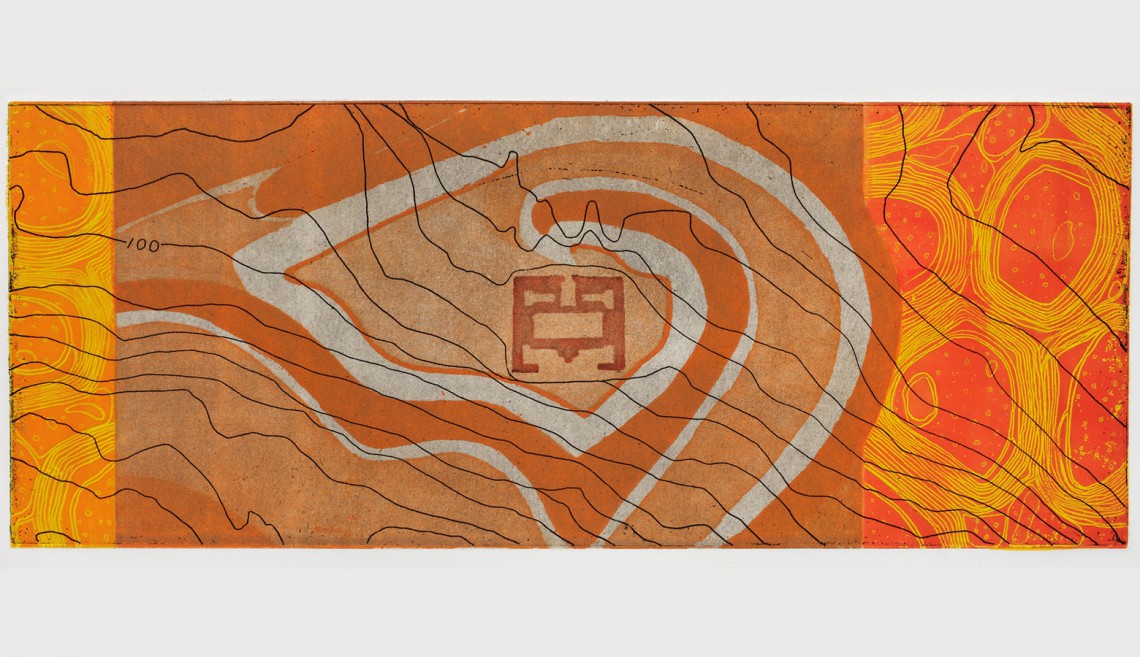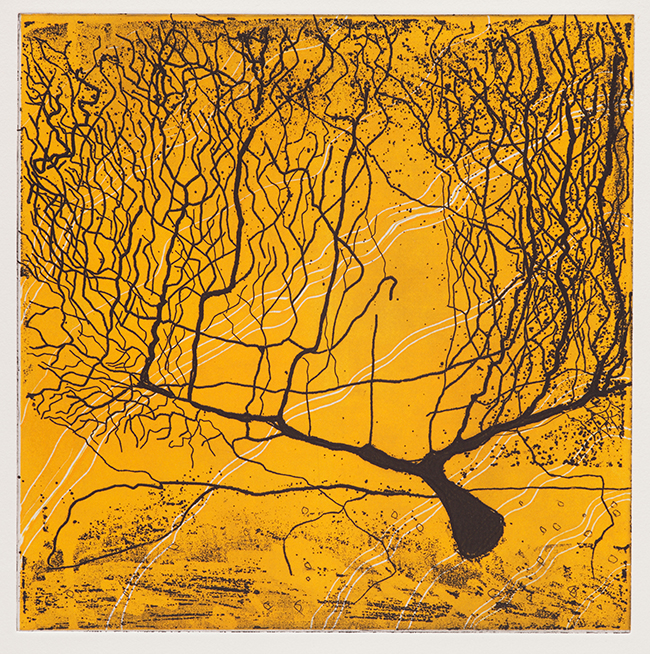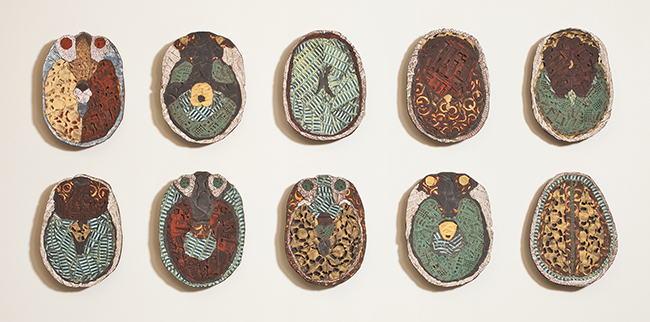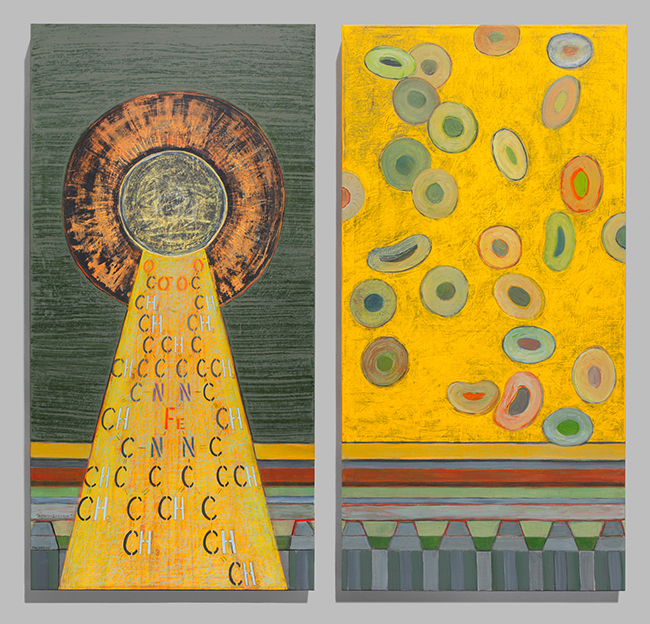
Laura Jacobson, Position
Photo: Marty KellyArtwork inspired by MRI brain scans installed at Stanford imaging center
Clay wall sculptures, etchings and acrylics, inspired by images of the human brain, make up a new art installation at the Stanford Center for Cognitive and Neurobiological Imaging.
Art and science meet in a new installation of clay sculptures, etchings and acrylics at the Stanford Center for Cognitive and Neurobiological Imaging.
The pieces by artist Laura Jacobson, a Stanford alumna, are inspired by MRIs of the human brain and reflect the work of the center to investigate connections between neuroscience and society.

Photo: Marty Kelly
The center, in the basement of the Department of Psychology, uses the MRI to support research that advances understanding of the brain, including decision-making, cognition, perception, child development, education and emotion.
“It’s not a weird, scary place filled with chemicals,” said psychology professor Brian Wandell, who directs the center. “But it’s an MRI and there is a scary quality to it.”
Wandell said one of the goals of the art installation is to break down some of that fear.
“It’s a place where we bring families to study brain function, why we do things, behavior. We thought having art that reflects what we see and do and our mission might make all of it more inviting,” he said.
Jacobson used her own brain scans, received when she volunteered for a research study, as her inspiration. She did further research to flesh out the series and incorporate etchings and acrylics.

Photo: Marty Kelly
There are three areas of the center where the works are on display. In the lobby are clay renderings of the brain scans mounted on wood and placed in two rows of five. Impressions on the sculptures were made with industrial parts Jacobson found at stores, in her home or on the street. They include circuit boards and auto parts, and are meant to suggest a contemporary urban fossil.
The combination of the materials also connects society, mind and brain, she said.
Down the hall, an etching of the hippocampus in orange, red and yellow speaks to the idea of mapping and location. The work includes the topography of Stanford and the Quad, where the center is located.

Photo: Marty Kelly
The hippocampus plays a role in our ability to locate ourselves in space. “Here we are looking at the piece and we can find ourselves on the map, so to speak. It relates to the overall purpose of the center in mapping the human brain,” Jacobson said.
The center is hosting an open house and reception on Friday, June 7. People who wish to attend are asked to RSVP to facility manager Laima Baltusis at laimab@stanford.edu.
